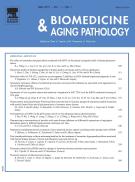COX-2 as a molecular target of colon cancer chemoprevention: Promise and reality - 08/10/12

Abstract |
The decisive epidemiological observation that non-steroidal anti-inflammatory drugs (NSAIDs) prevent colon and possibly other cancers as well has spurred novel approaches to cancer chemoprevention. The known inhibitory effect of NSAIDs on the prostaglandin production prompted studies focusing on cyclooxygenase (COX) and its products. The increased prostaglandin E2 levels and the over-expression of COX-2 in colon and many other cancers provided the rationale for clinical trials with COX-2 inhibitors for cancer chemoprevention. However, their modest efficacy in the prevention of sporadic colon and other cancers, and the recent withdrawal of Rofecoxib, a COX-2 specific inhibitor (coxib), because of its side effects are causes of concern about this class. There is evidence to suggest that COX-2 may not be the only or ideal target in the eicosanoid pathway for cancer chemoprevention. Various observations like the relatively late induction of COX-2 in carcinogenesis, the modest clinical efficacy of coxibs in comparison to traditional NSAIDs (tNSAIDs) in cancer prevention trials, the finding that NSAIDs may not require inhibition of COX-2 for their effect, that currently available coxibs have multiple non-COX-2 effects, the possibility that concurrent inhibition of COX-2 in non-malignant cells may be harmful and the possibility that COX-2 inhibition may modulate alternative eicosanoid pathways in a way that promote carcinogenesis support this concept. Given the limitations of COX-2-specific inhibitors and the biological evidence for the existence of other potential targets, we suggest that targets other than COX-2 should be explored as unconventional or paired approaches to cancer prevention.
Le texte complet de cet article est disponible en PDF.Keywords : Chemoprevention, Colon cancer, COX-2, Coxibs, NSAIDs
Plan
Vol 2 - N° 3
P. 67-72 - juillet 2012 Retour au numéroBienvenue sur EM-consulte, la référence des professionnels de santé.
L’accès au texte intégral de cet article nécessite un abonnement.
Déjà abonné à cette revue ?

